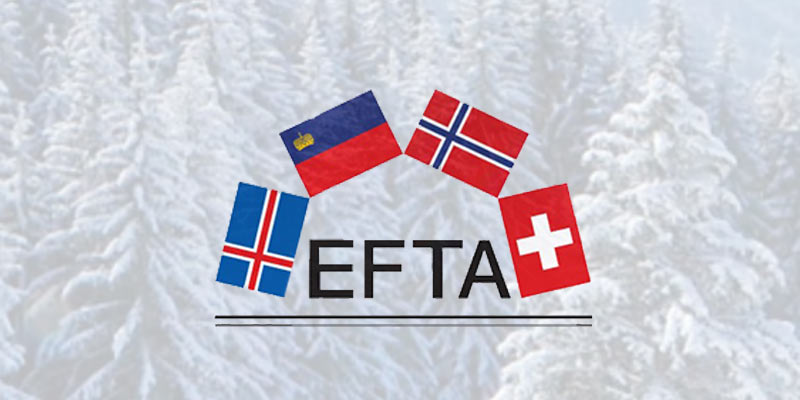- World
- May 16
Explainer - What is EFTA?
• India and the European Free Trade Association (EFTA) countries discussed the modalities of engagement for working towards a comprehensive Trade and Economic Partnership Agreement (TEPA).
• EFTA currently has four member countries: Iceland, Liechtenstein, Norway and Switzerland.
• EFTA countries are not part of the European Union (EU).
• A free trade agreement between the two regions is officially dubbed as TEPA.
• Under such pacts, two trading partners significantly reduce or eliminate customs duties on the maximum number of goods traded between them, besides easing norms to promote trade in services and investments.
• A free trade agreement between India and four-nation bloc EFTA will help enhance two-way commerce, investment flows, job creation and economic growth.
• Commerce and Industry Minister Piyush Goyal, who is in Brussels, has discussed modalities of engagement for working towards a comprehensive TEPA with representatives of Iceland, Liechtenstein, Norway, and Switzerland.
• A TEPA between EFTA and India could bring significant economic benefits, such as integrated and resilient supply chains and new opportunities for businesses and individuals on both sides leading to increased trade and investment flows, job creation, and economic growth.
European Free Trade Association (EFTA)
• The European Free Trade Association (EFTA) is an inter-governmental organisation of Iceland, Liechtenstein, Norway and Switzerland.
• It was set up in 1960 by its then seven Member States for the promotion of free trade and economic integration between its members.
• There were seven founding countries: Austria, Denmark, Norway, Portugal, Sweden, Switzerland and the United Kingdom (UK). They were joined by Iceland in 1970, by Finland in 1986 and by Liechtenstein in 1991.
• Meanwhile, in 1973, Denmark and the UK joined the EU. Portugal joined the EU in 1986. Austria, Finland and Sweden joined the EU in 1995, consequently leaving EFTA.
• EFTA does not envisage political integration. It does not issue legislation, nor does it establish a customs union.
• EFTA’s first objective was to liberalise trade between its Member States.
• EFTA countries enjoy access to one of the world’s largest networks of preferential trade relations, covering 80 per cent of EFTA’s merchandise trade.
• Currently, the EFTA States together have 29 FTAs in force or awaiting ratification covering 40 partner countries worldwide (outside Europe).
• EFTA is the European Union’s third largest trading partner in merchandise, and the second largest in services.
• India’s exports to EFTA countries during April-February 2022-23 stood at $1.67 billion as against $1.74 billion in 2021-22. Imports aggregated at $15 billion during the 11-month period as compared to $25.5 billion in 2021-22.
• The EFTA Council is the highest governing body of EFTA. The Council usually meets eight times a year at the ambassadorial level (heads of permanent delegations to EFTA) and once a year at ministerial level.
• The EFTA Secretariat is situated in Geneva.
EFTA States
• Switzerland is a world leader in pharmaceuticals, biotechnology, machinery, banking and insurance.
• Liechtenstein, like Switzerland, is highly industrialised and specialised in capital-intensive and research & development driven technology products.
• The Icelandic economy benefits from renewable natural resources, not least rich fishing grounds, and has increasingly diversified into other industries and services.
• Abundant natural resources also contribute significantly to Norway’s economic strength, including oil and gas exploration and production, and fisheries, as well as important service sectors such as maritime transport and energy-related services.
Manorama Yearbook app is now available on Google Play Store and iOS App Store

